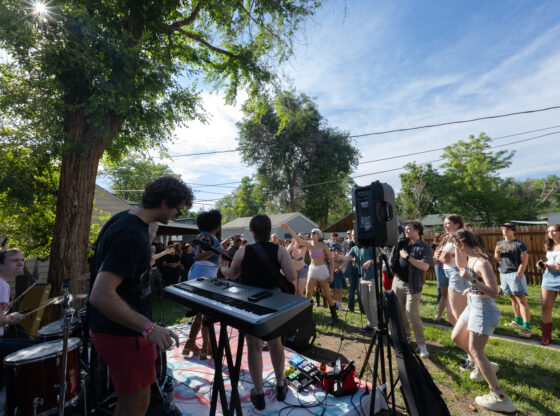Now that spring has arrived on the University of Denver campus, it almost impossible to step outside between midday classes and not see people lounging around, on the grass near Cherrington and Sturm, taking full advantage of the hot May sun. Many of these people – at least, those not fortunate enough to have vacationed in a tropical location over spring break – are baking themselves like a glazed ham in order to score the perfect summer tan.
However, as May is National Skin Cancer Awareness Month, it seems only appropriate to mention that this summertime roasting ritual is not the healthiest of activities.
Okay, okay, you’ve heard this before: tanning is bad for you, put on sunscreen, wear comically large Kentucky Derby-style hats, et cetera. But when you go to school in Denver, this advice is more important than you might think; at an altitude of 5,280 feet above sea level (that’s a whole mile, for you non-natives), Denver gets much more UV exposure than most other cities. Pair that fact with Colorado’s famed 300 days of sunlight per year, and you have a greater cause for concern when it comes to skin cancer at DU.
In fact, in 2004, a report from the Colorado Department of Public Health said that in Colorado, the odds of developing melanoma were 38 percent greater in men and 46 percent greater in women than the national average. These disturbing statistics make sense, given Colorado’s climate and the state’s reputation as a hub for a myriad of outdoor sports.
What may be even more disturbing is a recent study published in the March 2007 Journal of the American Academy of Dermatology that suggests tanning could be an addictive behavior. Colleges are full of tanning junkies looking for a fix, whether outdoors or in a tanning bed.
So, are you one of these bronzing addicts, scoring your next hit of UVB every chance you get? Although tanning is, of course, a personal choice, if melanoma isn’t your cup of tea, here are the best things you can do to protect your skin this summer. And yes, you’ve heard this before.
Apply sunblock! The recommended ideal strength is SPF 30, and make sure it contains both UVA and UVB protection. UVB rays are the ones that tan the top layer of your skin, and are strongest in summer; previously, sunscreens only protected against this kind of ray. Now, many sunscreens also protect against UVA rays, which penetrate deeper in the skin and can cause noticeable damage later in life, and are present in the atmosphere year-round.
Sunglasses are always in style.
Ladies, a lot of makeup nowadays contains sun protectants, as do many moisturizers. Take advantage of these products to avoid the glossy-faced look of regular sunscreen.
It’s true, in our society, bronze is beautiful. However, nothing is wrong with a little fake-bake, provided you avoid the day-glow effect. Self-tanners are improving, and all the stars are touting products like Jergens Natural Glow daily moisturizer (if celebrities like it, it must be good, right?). Just be warned that it smells kind of strange.
Keep in mind these are only helpful reminders. If you really love that baked feeling, or are deathly afraid of rickets, then by all means worship that sun. However, if you do choose the healthier route, rest assured that the Kentucky Derby sun bonnets are – and will remain – completely optional.










